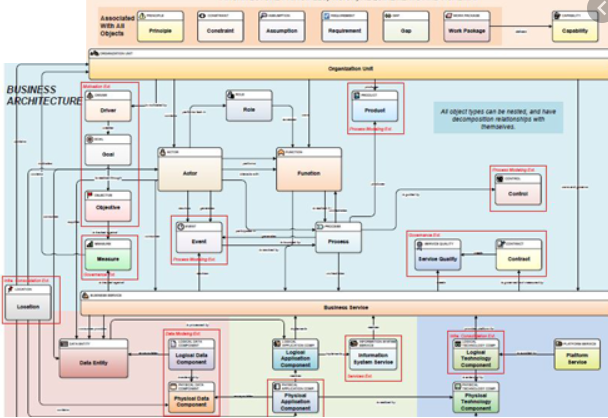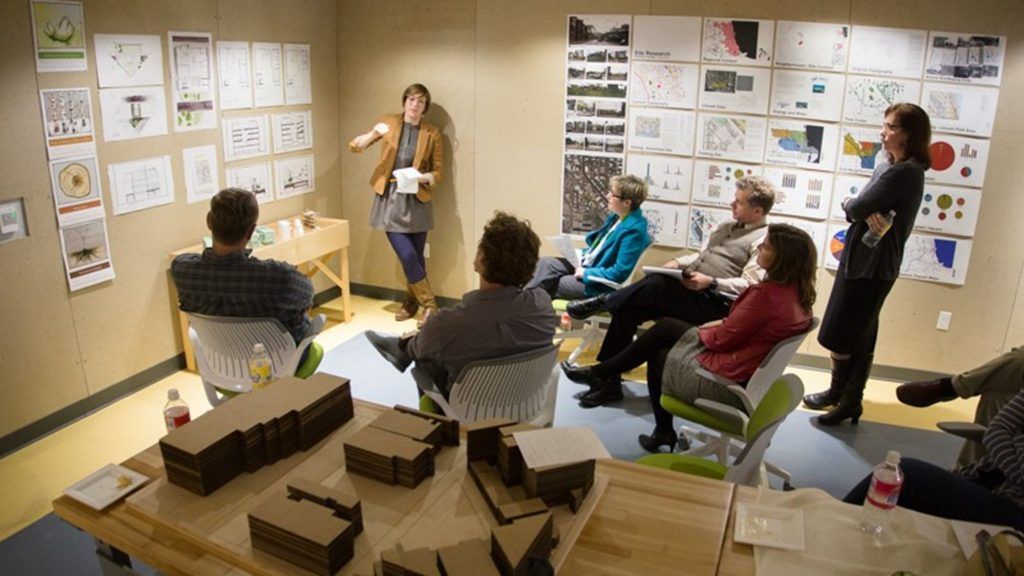The typical career of enterprise architects (EAs) starts with IT-related studies. EAs then move from software engineering to software architecture and finally to EA. As a logical consequence, EA is still driven by an engineering mindset even if some EAs have moved to the field of business architecture. You can feel the rational, analytical approach to design enterprises in almost any diagram or map created by EAs - quite often ugly but precise:

EAs are people with awesome skills in designing the internals of the enterprise for feasibility:
What (business- and IT-) structures do we need to deliver? What capabilities, processes, applications, technology components are in place? How does everything fit together? How can we make things more efficient?
With the rise of digital transformation, the traditional engineer's inside-out view is not enough to design enterprises anymore. Companies now are part of an ecosystem of customers and partners. Enterprises need to be designed from an inside-out AND outside-in perspective.
New design disciplines (e.g. Service- or UX designers) have emerged that usually see the enterprise from this outside-in, customer perspective. They usually take a totally different career path coming more from graphical- or other design schools. They apply much more of an artistic- rather than an analytical way of thinking. You can feel the artistic aspiration in many of their deliverables. Drawings and diagrams are usually beautiful but often too vague to be implemented.

In addition to the EA's engineering/feasibility viewpoint, designers typically deal with two additional viewpoints:
Identity of the company: the personality of the enterprise expressed in brands, culture, and image
Who are we? Why do we exist? What matters to us? What makes us unique?
Experience: The role the company plays in people's lives, what they get out of it
What is our role in people’s lives? How can we participate best in customer journeys? What's the best user experience we can provide? What is the value we create for them?
Today designers and EAs are having hard times with each other. Their way of thinking is totally different - here the smart analytic thinker and there the creative artist. The wall between those disciplines can't be much higher, designing for all three perspectives (feasibility, identity, experience) at the same time becomes impossible. EA models don't resonate with designers, designers' beautiful pictures, storyboards, canvases are perceived as too vague and naive by EAs.
Enterprise Design & Architectural Thinking: Bringing Design and EA together
The emerging discipline of enterprise design aims at designing enterprises from all three viewpoints: identity, experience and feasibility. It is is about bringing together all the elements needed to make an enterprise successfully deliver, using a holistic and systemic design approach.
A good summary of the approach is given in the video below.
In the future, EA will no longer be driven by classical feasibility (EA) aspects only but also by the identity of the company and the experience it provides to customers, partners, and employees. Methods developed by the design community will be applied to design enterprise architectures.
What you should do:
Did you like this blog post? Never miss an update when we publish next:
ENTERPRISE DESIGN PATTERNS
Capturing a wealth of experience from many sources, four world-class enterprise designers and architects present a collection of 35 immediately applicable solutions to successful enterprise design.
Buy the book